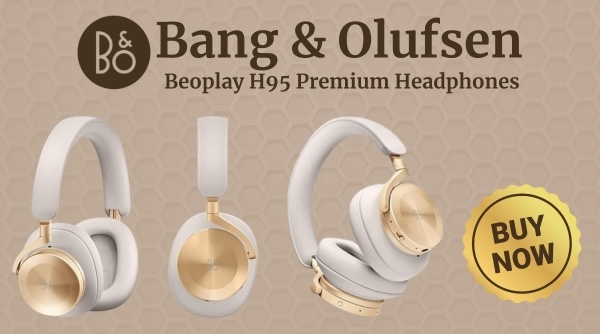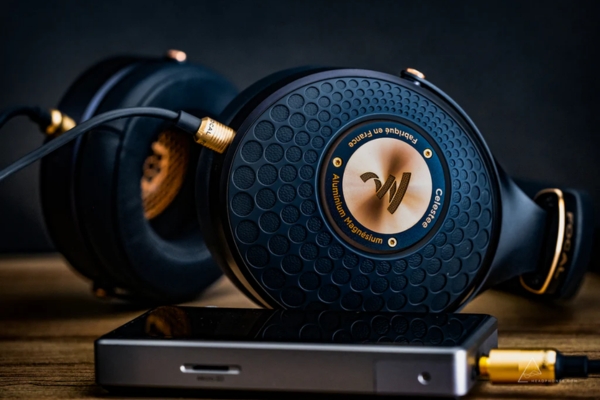Are High-End Headphones Worth It for The Casual Listener?
Most people don’t think twice about their headphones—just plug in, press play, and let the music roll. But hidden beneath the surface of everyday listening lies an entire world of sound you might not even know you’re missing.
Even for casual listeners, the benefits of audiophile headphones can be surprisingly noticeable. While non-audiophiles might not have the vocabulary to explain why the sound feels better, they’ll often feel the difference the moment they hit play.
Without needing to dive deep into the technicalities of audio gear, everyday users can still experience a richer, more immersive sound—if they know what to listen for.
In the world of audio, high-end headphones are known for their clarity, realism, and spacious presentation—but they also come with hefty price tags. For casual listeners, the question is valid: Is a $500+ pair of headphones really that much better than a $100 pair?
Let’s explore whether these premium headphones offer a meaningful difference for the everyday music lover and whether it’s worth splashing those extra few hundred, or even thousands of dollars.

What Defines Great Sound?
When people think about sound quality, they often reduce it to just volume or bass. But true audio fidelity goes far beyond that.
Audiophile headphones are engineered to unlock the full sonic landscape of a recording. They typically deliver an extended frequency response, capturing everything from deep, rumbling lows to shimmering highs that cheaper headphones often miss.
The clarity and resolution of detail is noticeably richer, even if you can’t quite describe why.
One of the standout traits of high-end headphones is the soundstage—essentially, the perceived space and positioning of sound. Instead of feeling like all the instruments are crammed into your head, a good pair of headphones can make it feel like you’re sitting in the room with the musicians.
Subtle production details come alive: a quiet background vocal, the resonance of a snare, or the distant echo of a reverb tail.
Tuning, too, plays a major role. Premium headphones are often meticulously balanced to avoid artificial boosts in certain frequencies, offering a more faithful reproduction of the original recording.
Alongside this, the materials used—from memory foam ear cushions to aerospace-grade metals—contribute to comfort and durability and also how the headphones shape and deliver sound.
Interestingly, even casual listeners should be able to notice something different. They might not be able to name the frequency range or describe harmonic distortion, but they’ll often say it just “sounds clearer” or “feels more real.”

Through the Eyes (or Ears) of a Casual Listener
For non-audiophiles, the real question often boils down to practicality: Can I actually hear a difference—and is it worth paying more for?
If you’re listening casually—say, playing background music while working or commuting—you might not notice a massive leap in quality right away. But take a quiet moment, cue up a well-produced track you know by heart, and the difference can be striking.
Moving from a $100 pair of headphones to some priced in the lower audiophile range of about $500 and you’ll notice an immediate upgrade. The sound becomes more balanced, cleaner, and more engaging. Details that were previously buried suddenly come alive.
That said, there’s a point of diminishing returns. The jump from $500 to $1,500 and beyond isn’t always as dramatic, especially for the casual listener. Improvements in resolution, spatial imaging, or tonal refinement can become subtler, often requiring a trained ear—or a specific kind of music and setup—to fully appreciate.
What Really Affects Your Listening Experience?
Not all improvements are about the headphones themselves—external factors can make or break your experience. For example, the kind of music you listen to has a major influence. Acoustic tracks, jazz, classical music, and cinematic scores tend to reveal the capabilities of premium headphones in ways that heavily compressed pop or low-quality audio files can’t.
And if your library consists of lo-fi MP3s or YouTube rips, even the best headphones will only reveal their limitations more clearly.
The source quality matters immensely. Lossless formats like FLAC or high-bitrate streaming services provide the detail these headphones are designed to showcase. Conversely, a poorly encoded track can sound worse on high-end gear because there’s nowhere for the flaws to hide.

Your environment plays a part too. In loud surroundings, you’re unlikely to benefit much unless you’re using noise-canceling headphones—and this is another area where premium models often outperform their cheaper counterparts.
Then there’s comfort. If you wear headphones for hours at a time, the difference between a plastic headband and plush memory foam goes beyond luxury and becomes part of the experience.
Starting Your Audio Journey
For those curious about stepping into higher-quality sound, the best advice is to listen to something familiar through different headphones and just pay attention. You don’t need technical knowledge to start hearing the differences—just a bit of intentional listening.
Try exploring high-resolution music formats. Even one or two songs can serve as a reference point for understanding what your current setup may be hiding. Learning some of the basic audio terms, like soundstage, imaging, and dynamic range, can also help you articulate your experience.
A Closer Look at What You’re Paying For
Much of the price difference between entry-level and audiophile headphones comes down to engineering. Larger, more sophisticated drivers mean more accurate sound reproduction, especially at higher volumes or in complex passages of music.
The materials used, whether it’s metal enclosures, genuine leather, or finely tuned acoustics, can also affect sound characteristics by reducing unwanted resonance or distortion.

Then there’s the question of amplification. Some premium headphones are built with higher impedance, meaning they need more power to perform at their very best. While they may sound decent plugged into a phone, pairing them with a dedicated headphone amplifier often unlocks their full potential, revealing new layers in the music that weren’t apparent before.
Are High-End Headphones Worth It for The Casual Listener?
There’s an old saying: “If you don’t know what you’re listening for, you won’t hear it.” And there’s a lot of truth to that. Just like developing a palate for fine wine or specialty coffee, it takes time to train your ears. Jumping straight into a $3,000 setup might leave you underwhelmed if you haven’t yet learned to notice the subtleties that make it special.
But once you hear something better, it’s hard to go back.
Many people find that once they dip their toes into high-end audio, they begin to notice more: a background harmony they never caught before, the natural reverb of a live performance, or the subtle layering of instruments in a song they’ve heard a hundred times.
So, are high-end headphones worth it for the casual listener? IMO, yes, because anybody half-interested in better audio will appreciate it once they experience the difference. But be careful, because what begins as curiosity can become a genuine passion.
Check out more from our Soundrating Blog
What Is a DAC – And Why Should You Care?

I am a passionate and skilled car audio enthusiast with 15 years of experience in the industry. My journey started when I replaced my first set of factory car speakers, sparking a deep love for high-quality sound. Since then, I have worked as a representative for renowned brands like Kenwood and Alpine.
With a background in both retail and distribution, I have developed a comprehensive understanding of the car audio market. Currently a certified (MECP) installer in the Mobile Electronics industry, my expertise lies in delivering top-notch audio installations. My knowledge, coupled with my genuine passion, makes me the go-to professional for all car audio needs.
